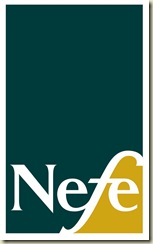I’ll start this off by saying; I think credit unions have a huge opportunity coming up. Where many see a problem, we should see the opportunity to stay true to the credit union mission and to differentiate ourselves from banks.
What is this opportunity you might ask? Financial literacy of course!
According to The Young Americans Center For Financial Education:
- Of the 6000 students that took the Jump$tart survey, 62% of them failed.
- In the 18-24 age bracket 30% of their average monthly income goes to debt repayment.
- 45% of teen know how to use a credit card while only 26% showed understanding of interest rates and fees.
- Only 1 in 3 teens know how to read a bank statement, Balance a checkbook, or pay bills.
- Barely 1 in 5 teens know how to invest.
Judging by these numbers, the young people of our nation (“my” generation) have very little understanding of how to manage their finances.
This is a tragedy in my opinion, and many people don’t see a solution. I see it as an opportunity for credit unions to fill a void that perfectly fits our mission of people helping people and promoting thrift.
Financial literacy is often breezed over, if covered at all, during the average high school career. Though it is unfortunate, it is easy to see why. Teachers have so much to worry about teaching that financial literacy often doesn’t seem like a priority.
This is where Credit Unions come in. We have the ability, resources, and hopefully, passion to bring financial literacy to classrooms across our fields of membership. We are perfectly positioned to take advantage of resources like NEFE to help bring knowledge of financial management to students in our local area. 
If you don’t already know what NEFE is, it is a non-profit organization dedicated to bringing people a financial literacy curriculum with a focus on high schools. They provide materials that are free to schools, including a full set of lesson plans, case studies, and workbooks. It is an incredible resource with a great track record of partnering with credit unions to bring it to local schools.
If your credit union hasn’t already looked into some kind of financial literacy program, now is the time to do it. The economy is struggling, debt is rising, and nearly a million people found themselves unable to stay afloat last year. The timing couldn’t be better for credit unions to jump in and help break the cycle caused by people living beyond their means. Many are finding themselves in a save-or-sink situation.
It is true that people just saving doesn’t benefit a credit union’s bottom line. In fact, if the dividends going out to deposit accounts aren’t matched by interest coming in from lending products, the profit margin can get tight.
Don’t think of promoting saving as an expense though, it is an investment in your community. When you teach somebody to save, it builds loyalty to your credit union. When they have some savings, they feel more comfortable, and are more able, to get lending products. Because they identify the credit union as the place that helped them to be financially sound, they are more likely to look at your credit union when shopping for a loan or credit card.
Show your community that you are looking out for them, teach them to be financially sound, and they will look to you more often when other decisions are at stake. Financial literacy is an investment in the future of your community. Though they may just be saving money now, they WILL be looking for that auto/home/personal loan in the future. If you can position your credit union as an advocate, it will be the place those people will look first.



No comments:
Post a Comment